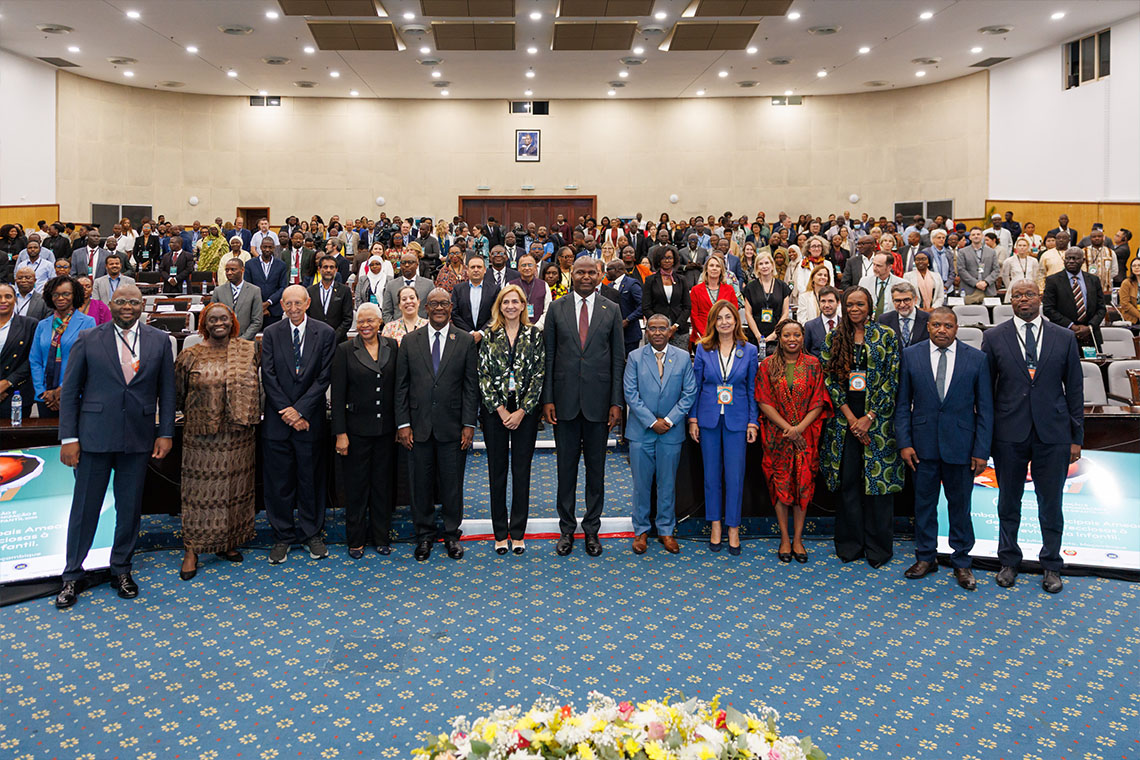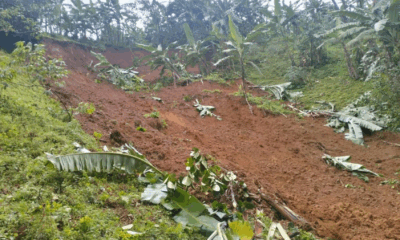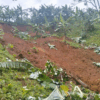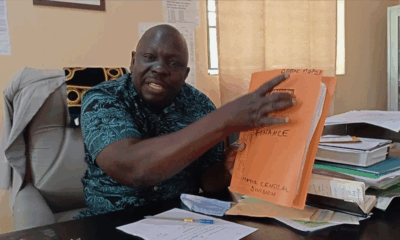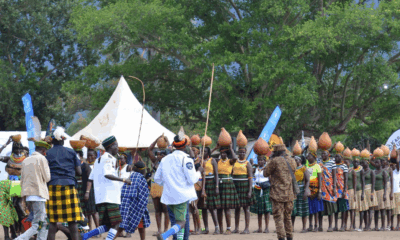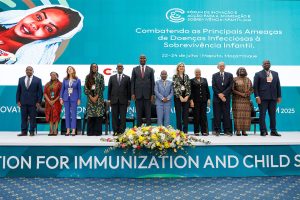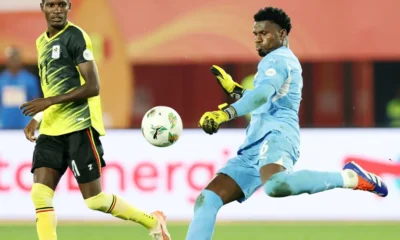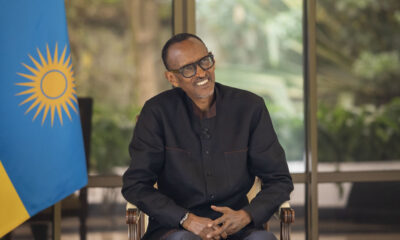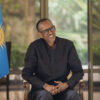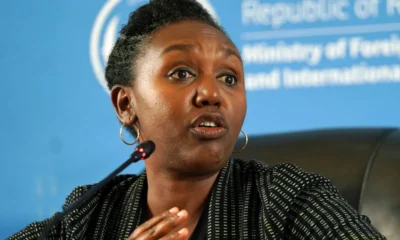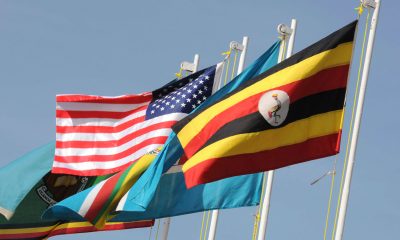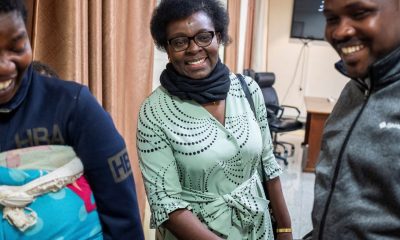Africa
African Countries Make Bold Commitments to End Preventable Deaths of Children Under Five By 2030
African countries have made bold pledges to address the continent’s maternal and child mortality crisis, as a challenging health landscape, shrinking resources, climate change and conflict threaten to reverse decades of progress in child survival.
Nearly five million children (https://apo-opa.co/44TWUFA) die from preventable causes before the age of five every year. Close to 60 per cent of these deaths occur in Africa, many of them caused by infectious diseases such as pneumonia, diarrhoea, malaria and meningitis. This is despite the existence of proven interventions such as vaccines, which have saved 154 million lives (https://apo-opa.co/4l6542n) over the past 50 years
As the 2030 Sustainable Development Goals (SDGs) deadline looms, African governments are now doubling down on their commitments to end preventable deaths of children under five as envisioned by the global goals over the next five years.
Speaking during the just concluded Innovation and Action for Immunization and Child Survival Forum 2025 (www.ChildHealthForum2025.com), which took place in Maputo, Mozambique, representatives from various African countries joined the co-hosting Governments of Mozambique and Sierra Leone and partners including the Government of Spain, the “la Caixa” Foundation, the Gates Foundation and UNICEF in sharing their commitments to prioritize child survival.
Addressing participants during the official opening ceremony, H.E Daniel Chapo, President of the Republic of Mozambique, said: “The Convention on the Rights of the Child establishes that all children have the right to survive and grow up healthy. Mozambique has made notable progress in safeguarding these rights, reducing child mortality from 201 to 60 per 1,000 live births between 1997 and 2022. These gains are the result of decades of structural investments in maternal and child health – one of the key pillars of our Government’s Five-Year Plan 2025–2029.”
We are calling on stakeholders to prioritize high-impact, high-return interventions alongside mobilizing resources for child survival
Despite such promising progress, Africa is still home to the majority of countries that are off-track to meet the SDGs. Noting this, government representatives and partners called for bold action to strengthen regional leadership; establish robust accountability; address inequities and mobilize sustainable financing.
“This is a defining moment for Africa; one of the greatest opportunities for resilience and strong African leadership. This forum brought us together not to discuss challenges, but to inspire action and save children’s lives. We have the tools, the science, the vaccines, diagnostics and treatments. What we need now is political commitment, suitable access, timely care and sustained investments across the continuum of care to enable us to accelerate progress toward the future we envision,” Hon. Dr. Austin Demby, Minister of Health, Sierra Leone.
Stakeholders at the three-day forum also advocated for deeper, more effective multistakeholder collaboration to enhance resourcing of primary health care and integration of child survival services.
“We are calling on stakeholders to prioritize high-impact, high-return interventions alongside mobilizing resources for child survival to build sustainability and efficiency within health systems. This will translate into significant gains not just for families and communities, but for economies and the continent as a whole,” said Hon. Dr. Ussene Isse, Minister of Health of Mozambique.
Acknowledging the urgent need to prioritize reaching the most vulnerable and marginalized communities with the full range of maternal health and child survival interventions across primary health care, immunization, nutrition, and disease prevention programs, countries and partners united in a joint Call to Action and commitments to:
- Strengthen regional leadership: Foster partnerships between national and regional health organizations including the African Union, Africa Centres for Disease Control and Prevention (Africa CDC), West African Health Organization (WAHO), East, Central and Southern Africa Health Community (ECSA-HC), and other stakeholders with capacity to contribute to child survival.
- Establish robust accountability: Ensure governments, partners, and civil society are held accountable for their child survival commitments at national, regional, and global levels, and report progress regularly.
- Address inequities: Focus on the most vulnerable children, particularly in Sub-Saharan Africa and South Asia, by removing barriers to care, improving maternal education, and addressing risk factors such as malnutrition, lack of access to safe water, sanitation, and hygiene, and air pollution, especially household.
- Mobilize sustainable financing: Increase domestic and international funding for child survival, prioritizing cost-effective interventions and life-saving commodities that strengthen health systems, and securing sustainable financing solutions for reaching the most vulnerable groups, including in fragile and conflict affected states. Ensure these resources are flexible, to reduce fragmentation and direct funds where and when they’re needed most.
- Invest in Primary Health Care (PHC): Increase domestic investment in resilient PHC systems, including at the community level. This includes securing continuum of care, appropriate referral systems, and quality of care at primary and referral level; equipping health facilities with diagnostic tools and essential medicines for pneumonia, malaria, and diarrhea, as well as sustainable energy sources and internet to support diagnostics, therapeutics, and data sharing; strengthening multi-sectoral partnerships, and training health workers to promptly diagnose and treat childhood infections and malnutrition.
- Invest decisively in prevention, preparedness, and response to public health emergencies, especially cholera, as a strategic priority. This includes strengthening multi-sectoral coordination, domestic financing, WASH infrastructure, critical supplies, community engagement, and humanitarian access. Without such investment, routine health services will remain vulnerable to repeated and severe disruptions.
- Accelerate vaccine coverage: Achieve and sustain >90% coverage of life-saving vaccines, including pneumococcal conjugate vaccine (PCV), diphtheria, tetanus, and pertussis (DTP), measles, rotavirus, malaria, meningitis, and typhoid vaccines, prioritizing zero-dose children and integrating vaccine delivery with nutrition and other high-impact child health services—with partnerships facilitating cross-sectoral collaboration—to reach the most vulnerable.
- Integrate the delivery of child survival services to improve access, acceptability, and cost-effectiveness: Explore opportunities to deliver child survival interventions and innovations through existing community-based platforms, and identify where continuous care can occur across maternal, newborn and child health care provisions.
- Enhance surveillance and innovation: Leverage data from initiatives like the Child Health and Mortality Prevention Surveillance (CHAMPS) Network to anticipate and respond to epidemiological trends, inform targeted interventions and accelerate the development and deployment of new tools.
“We have a shared responsibility to ensure that every child has a chance to live and thrive. As we make these promises to Africa’s children, we must—governments, partners and civil society— hold each other accountable for these child survival commitments at national, regional, and global levels, report progress regularly, and act decisively to close gaps in child survival so that no child dies from a preventable infectious disease,” said Theo Sowa, Chairperson of the Forum.
Comments



